Portugal
🇵🇹
Portugal — Pastel-colored towns, sea-salted air, and a rhythm that makes you stay a little longer.
Visa Requirements
Portugal is part of the Schengen Area, allowing easy access for many travelers. Citizens of EU/EEA countries and Switzerland can enter Portugal without a visa and stay indefinitely. For non-EU/EEA nationals, visa requirements depend on the traveler’s nationality.
Types of Visas
Schengen Visa (Type C): Allows stays up to 90 days within a 180-day period for tourism, business, or family visits. This visa is valid for all 29 Schengen countries, including Portugal.
National Visa (Type D): Issued for extended stays such as study, work, or family reunification. Often a prerequisite for applying for a residence permit.
Visa-free entry: Citizens of many countries (See details below) can enter Portugal visa-free for up to 90 days.
Residence Permits: Required for stays longer than 90 days or for work and study purposes. These must typically be obtained before arrival through the Agency for Integration, Migration and Asylum (AIMA).
Visa Exempt Countries
- Albania, Andorra, Antigua and Barbuda, Argentina, Australia, Bosnia and Herzegovina, Barbados, Brunei, Brazil, Bahamas, Canada, Chile, Colombia, Costa Rica, Dominica, El Salvador, Grenada, Georgia, Guatemala, Honduras, Holy See, Israel, Japan, Kiribati, Malaysia, Marshall Islands, Mauritius, Mexico, Micronesia, Moldova, Monaco, Montenegro, Nauru, New Zealand, Nicaragua, North Macedonia, Palau, Panama, Paraguay, Peru, Saint Kitts and Nevis, Saint Vincent and the Grenadines, Samoa, San Marino, Serbia, Seychelles, Singapore, Solomon Islands, South Korea, Saint Lucia, Timor-Leste, Tonga, Trinidad and Tobago, Tuvalu, Ukraine, United Arab Emirates, United States, Uruguay, Vanuatu, Venezuela
- Hong Kong SAR and Macao SAR
- British Overseas Territories
- Taiwan

Visa facility
If you need a visa to visit Portugal, you should apply through:
The nearest Portuguese Embassy or Consulate, or
An official Visa Application Centre such as VFS Global, authorized to process visa applications for Portugal in your country.
Entry and Validity
Schengen visas may be issued for one, two or multiple entries, with a validity period up to five years.
Recent Changes
For the most accurate and up-to-date information, we recommend visiting the official Ministry of Foreign Affairs of Portugal (MNE) site and the EU visa policy – Consilium
How to get there?
Air Travel
Portugal is well-connected to global destinations through its major international airports in Lisbon, Porto, and Faro. TAP Air Portugal, the national airline, offers direct flights to cities across Europe, North America, South America, and Africa, including New York, São Paulo, Rio de Janeiro, Dubai, and most major European cities.
In addition to TAP, international carriers such as Lufthansa, KLM, British Airways, Air France, Ryanair and easyJet provide frequent service to and from Portugal.
Domestic flights connect Lisbon to cities like Porto, Faro, Madeira (Funchal), and the Azores (Ponta Delgada, Terceira), making it easy to explore mainland Portugal and its island regions.

(Photo by at Adam Moreira)
Portugal’s main international airports offer excellent global connectivity and convenient access to various regions across the country:
Lisbon Humberto Delgado Airport (LIS) – Portugal’s largest and busiest airport, serving as the main international gateway and a key hub for transatlantic and European flights.
Porto Francisco Sá Carneiro Airport (OPO) – A major northern hub with extensive connections to European cities and select intercontinental routes.
Faro Airport (FAO) – The primary gateway to the Algarve region, popular for beach holidays and resort destinations.
Funchal Cristiano Ronaldo Airport (FNC) – Serving the Madeira Islands with both domestic and international connections, especially to mainland Europe.
Ponta Delgada João Paulo II Airport (PDL) – The main airport in the Azores archipelago, offering flights to Lisbon, Porto, and select international destinations.

Cruise & Ferry Connections
Portugal is a popular destination and stopover for many Atlantic and Mediterranean cruise routes, welcoming ships from major international cruise lines such as MSC Cruises, Royal Caribbean, Costa Cruises, and Norwegian Cruise Line.
Lisbon Cruise Port (Porto de Lisboa):
Lisbon is a major hub for Atlantic and Mediterranean cruises. It serves as a gateway to Portugal’s capital city and offers easy access to nearby attractions such as Sintra, Cascais, and the UNESCO World Heritage city of Évora.Cruises from Lisbon often connect to:
Porto (Leixões), Funchal (Madeira), Portimão (Algarve), Azores and occasionally Setúbal or Sines, offering passengers a chance to explore more of Portugal’s coastal gems.
Spanish ports like Barcelona and Malaga
Canary Islands (Tenerife, Gran Canaria)
Western Mediterranean destinations such as Marseille, Palma de Mallorca, and Valencia
Northern Europe ports on extended Atlantic routes
Porto Cruise Terminal (Leixões):
Porto, known for its historic wine cellars and riverside charm, connects cruises traveling the Iberian Atlantic coast. Porto Cruise Terminal serves cruises along the Iberian Atlantic coast, linking Portugal’s capital Lisbon, Vigo and A Coruña in Spain, and northern Europe on select cruises with extended Atlantic routesFunchal (Madeira) is a key stop for Atlantic and Mediterranean cruises connecting the Canary Islands, Azores, mainland Portugal, Spain, and Mediterranean ports.
Portimão Cruise Terminal serves southern Portugal cruises connecting Lisbon, Malaga, and Western Mediterranean stops.
Azores Islands: Ferries by Atlânticoline and other operators connect several islands in the Azores archipelago, such as São Miguel, Terceira, Faial, and Pico. These routes allow island hopping across volcanic landscapes and lush nature. The Azores also have air connections to mainland Portugal and other European cities.
Madeira Islands: Ferry services connect Madeira’s main island (Funchal) with Porto Santo Island, facilitating easy travel between the islands. Some seasonal ferry routes also connect Madeira with the Canary Islands.

(Photo by Tiago Ferreira)
Public Transport
Getting around Portugal is easy, safe, and convenient with a variety of excellent public transportation options:
Trains – Operated by Comboios de Portugal (CP), trains connect major cities like Lisbon, Porto, and Faro, as well as regional destinations. The Alfa Pendular high-speed trains offer fast and comfortable travel between Lisbon and Porto. Scenic routes along the coast and through the countryside make train travel a great way to explore the country.
City buses – Available in most cities and operated by regional transport authorities such as Carris in Lisbon and STCP in Porto. City buses are reliable and often equipped with free Wi-Fi. Tickets can be purchased via mobile apps, travel cards, or onboard in some cases. Contactless “tap and go” payments are now available in most city buses.
Trams – A charming way to explore Lisbon and Porto, with iconic historic trams such as Lisbon’s famous Tram 28 providing scenic city tours. Trams offer a unique cultural experience and convenient urban transport.
🚇Metro – Lisbon and Porto have modern metro systems that provide quick, efficient travel within urban areas. Tickets are integrated with other public transport modes, making transfers easy.
App-based taxis – In Portugal, popular ride-sharing and taxi apps like Uber, Bolt, and others, convenient, reliable, and affordable transportation in major cities including Lisbon, Porto, and Faro.
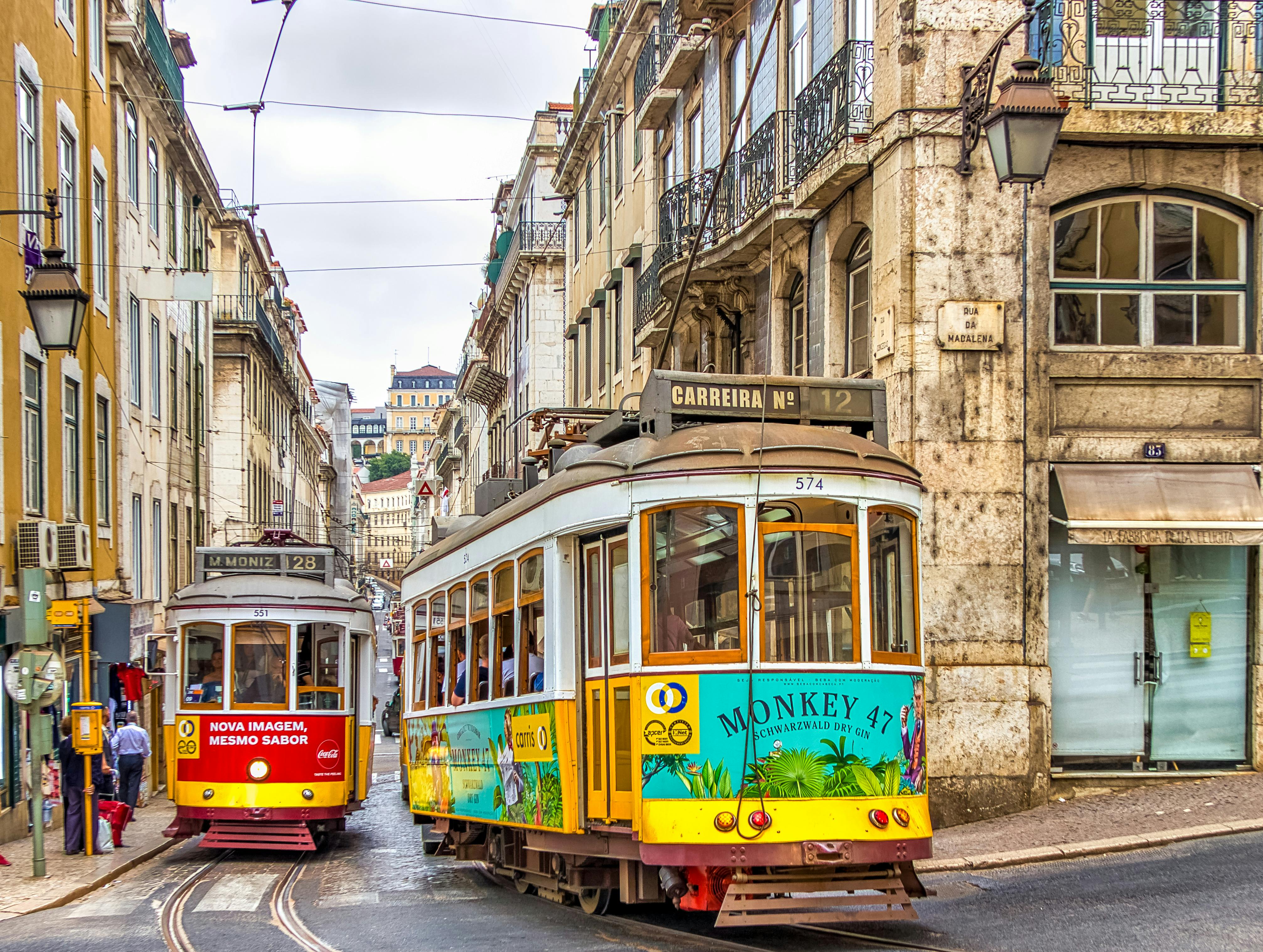
Ferries – Transtejo & Soflusa operates frequent passenger ferry services across the Tagus River in Lisbon, connecting key locations such as Cais do Sodré, Belém, Barreiro, and Cacilhas. In northern Portugal, Douro River ferry provide picturesque crossings and tours along the Douro Valley, a UNESCO World Heritage region known for its vineyards and historic towns. For island travel, ferries connect the mainland to Madeira and the Azores, with operators like Atlânticoline offering inter-island services.
Intercity buses –Portugal’s main intercity bus operator is Rede Expressos with extensive network across the country, including Lisbon, Porto, Faro, Coimbra, and Évora. Other key operators include FlixBus and Rodonorte. Buses are frequent, affordable, and modern, with amenities like Wi-Fi and USB charging.
Payments
💶 Cash – Still widely accepted throughout Portugal, including in small towns and local markets. However, card payments are increasingly common in urban areas and tourist destinations.
💳 Debit/Credit Cards – Visa and Mastercard are accepted nearly everywhere—restaurants, shops, hotels, and public transport. American Express is accepted in some major establishments, but not as commonly as Visa/Mastercard.
📱 Mobile Payments – Gaining popularity in cities. Apple Pay, Google Pay, and MB WAY (a popular Portuguese mobile payment app linked to your bank) are accepted in many retail outlets and restaurants.
🏦 Bank Transfers – Frequently used for rentals, accommodation bookings, and local services, especially when arranged directly with Portuguese businesses.
💡 Tip: While cards and mobile payments are broadly accepted, it’s advisable to carry some cash for smaller establishments, cafés, or rural areas where electronic payment may not be available.

(Photo by Manish Jain)

(Photo by Peter-facebook)
Currency
Since January 1, 2002, Portugal’s official currency is the Euro (EUR), symbolized as €. One Euro is divided into 100 cents. Banknotes are issued in denominations of €5, €10, €20, €50, €100, €200, and €500, while coins are available in 1, 2, 5, 10, 20, and 50 cents, as well as €1 and €2.
Note: While €200 and €500 banknotes are legal tender, they are rarely used in daily transactions and may not be accepted by some stores or ATMs.
Currency Converter
Budget
Portugal is a value-packed destination offering excellent experiences for every budget. On average::
- 🧳 Budget travelers can expect to spend around $40–$70 USD/day, covering hostel stays, public transport, and meals at local cafes or markets.
- 🏨 Mid-range travelers typically spend $90–$150 USD/day, which includes 3-star hotels or guesthouses, dining at restaurants, and entry to attractions or day trips.
- 💎 Luxury travelers may spend $200 USD/day or more, enjoying upscale hotels, gourmet dining, private tours, and premium transport.
While more affordable than many Western European countries, Portugal still offers high-quality services, safety, and diverse landscapes, making it a top destination for travelers seeking both value and charm.

(Photo by Bert Christiaens)
Appliances
Portugal primarily uses Type C and Type F electrical sockets.
Appliances operate on a standard voltage of 230V with a frequency of 50Hz, compatible with most European devices.


When to visit?

Weather
Portugal enjoys a Mediterranean climate with mild winters and warm to hot summers, offering year-round travel appeal:
- Winter (December to February): Winters are generally mild, especially in the south. Lisbon and the Algarve often see daytime temperatures around 10–16°C (50–61°F), though northern areas like Porto can be cooler and wetter. Snow is rare outside mountainous regions like Serra da Estrela.
- Spring (March to May): Spring brings blooming landscapes and pleasant weather. Temperatures steadily rise, ranging between 15–22°C (59–72°F), making it an ideal time for sightseeing and outdoor activities.
- Summer (June to August): Summers are hot and dry, particularly in the interior and southern regions. Coastal cities such as Lisbon, Porto, and Faro enjoy temperatures around 25–35°C (77–95°F), tempered by Atlantic breezes. The Algarve is a prime beach destination during this season.
- Autumn (September to November): Early autumn remains warm and sunny, especially in September. Temperatures gradually drop, and rainfall becomes more frequent by November, particularly in the north.
Travelers should pack according to the season and region—light clothing and sun protection for summer, and layers or rainwear for cooler months in the north or interior.
Best Time to Visit
Portugal is a great destination year-round, offering diverse experiences across seasons—from vibrant festivals to beach holidays, cultural events, and scenic countryside escapes.
- Winter (December to February): A mild season, especially in the south (Algarve), ideal for coastal walks and off-season travel. It’s also a great time for city exploration in Lisbon and Porto without the crowds. In the Serra da Estrela mountains, winter sports like skiing are possible when snowfall allows.
- Spring (March to May): One of the best times to visit, with blooming wildflowers, comfortable temperatures, and local festivals such as Festa das Flores in Madeira and Semana Santa celebrations across the country. Perfect for road trips, wine tours, and countryside exploration.
- Summer (June to August): Peak tourist season, ideal for beachgoers and sunseekers. The Algarve, Lisbon Coast, and Madeira are popular for their stunning beaches and vibrant nightlife. Expect hot, dry weather—especially in the interior and southern regions.
- Autumn (September to November): A beautiful time for wine lovers and nature enthusiasts, with grape harvest festivals (vindimas), mild weather, and golden landscapes in regions like Douro Valley and Alentejo. Early autumn still offers warm beach days, while later months are ideal for cultural travel.
For those looking to avoid crowds and enjoy pleasant weather, the shoulder seasons—spring (April–May) and autumn (September–October)—are excellent choices. Summer is perfect for beach vacations, while winter offers a quieter, more cultural experience with festive charm during Christmas and New Year’s.

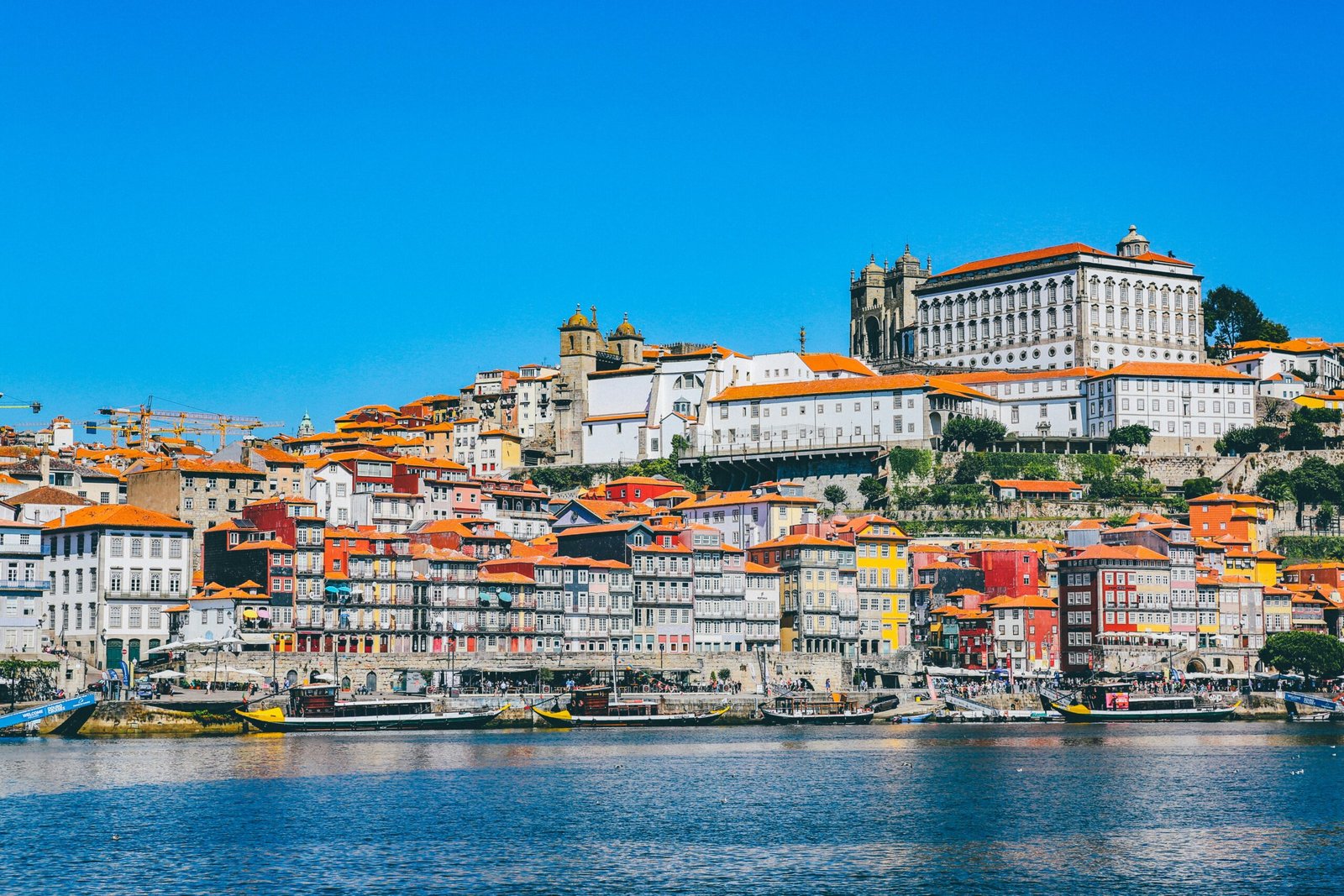
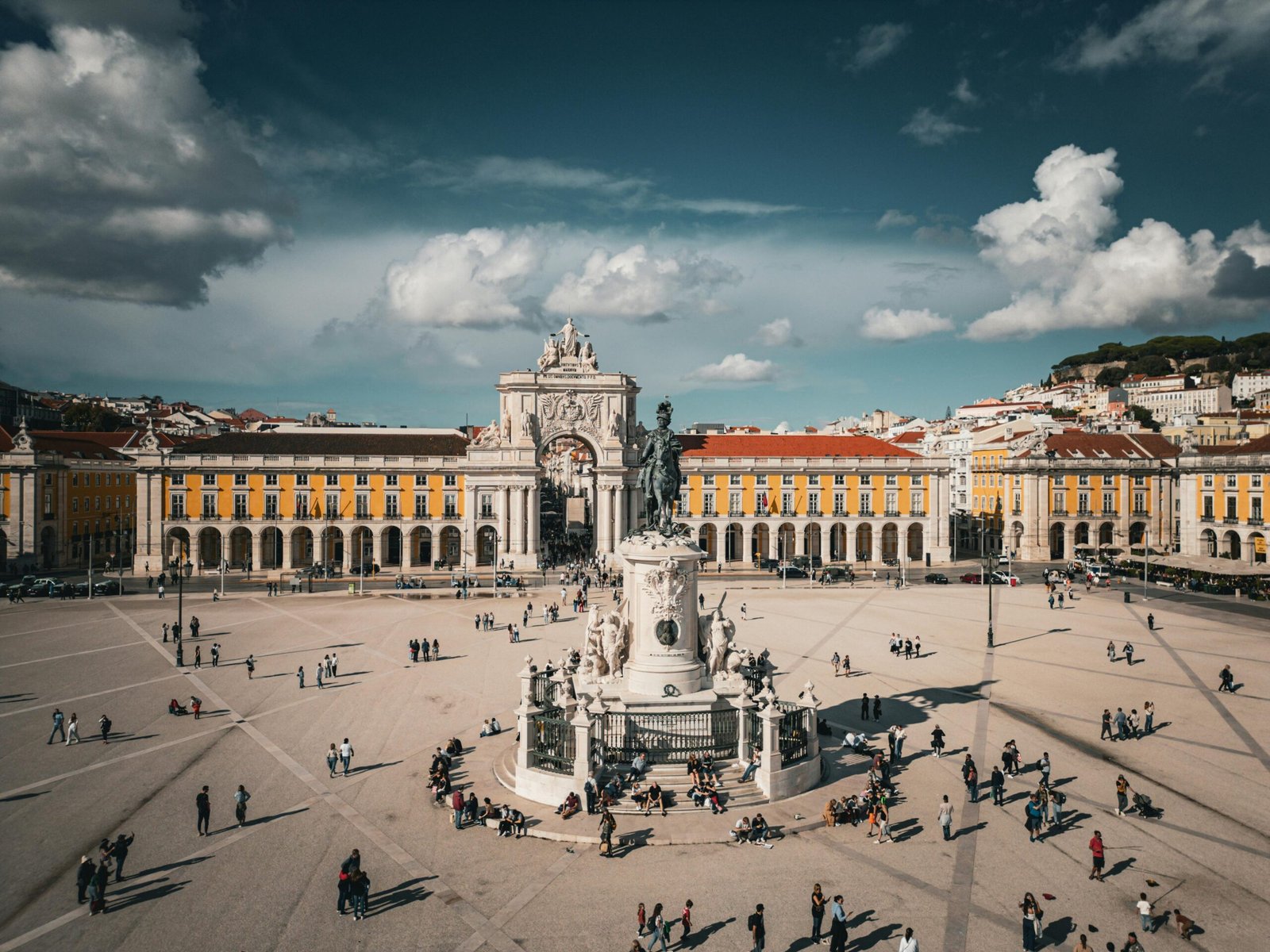
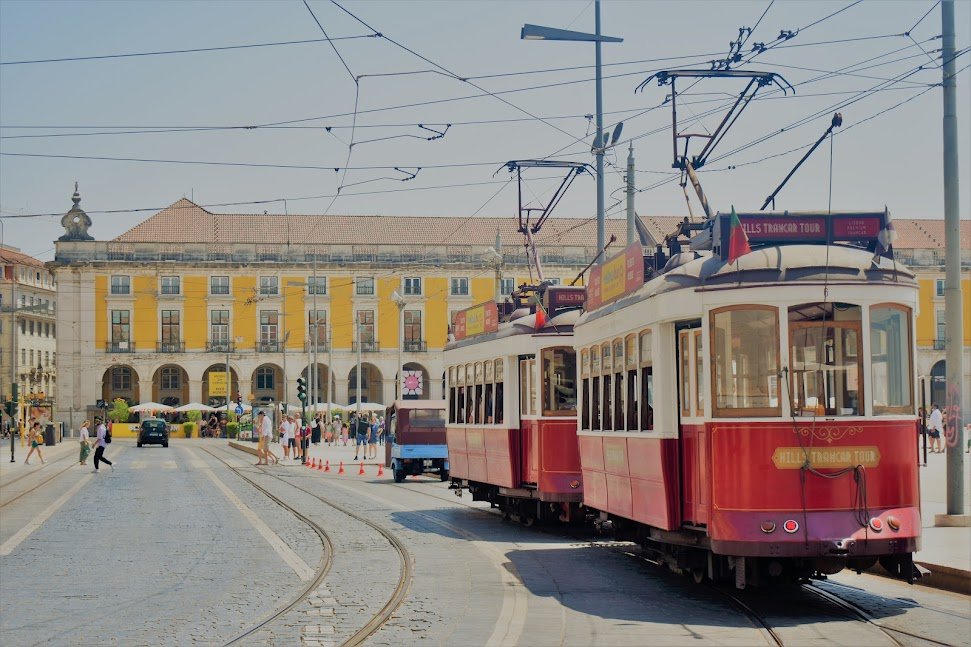
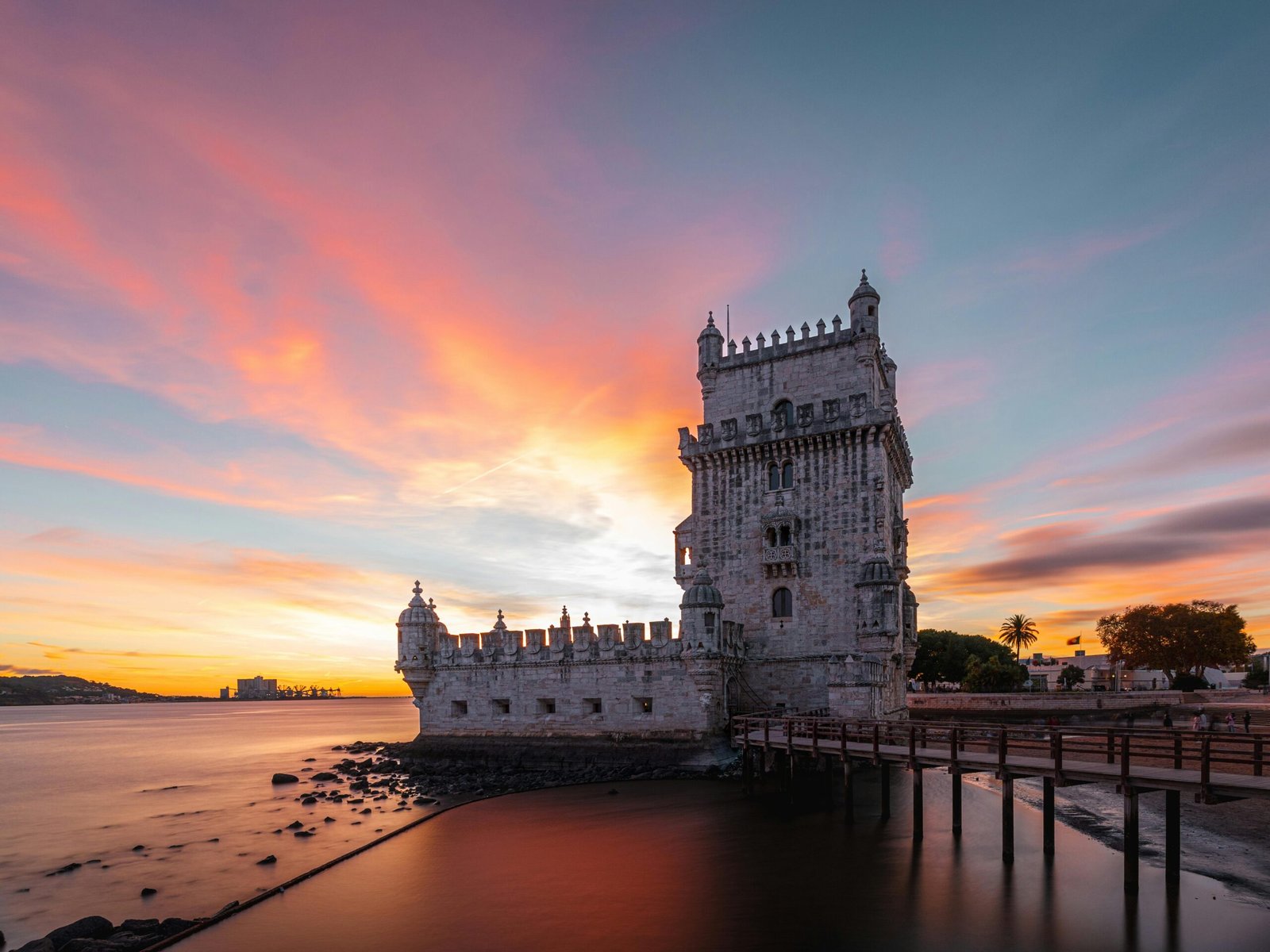
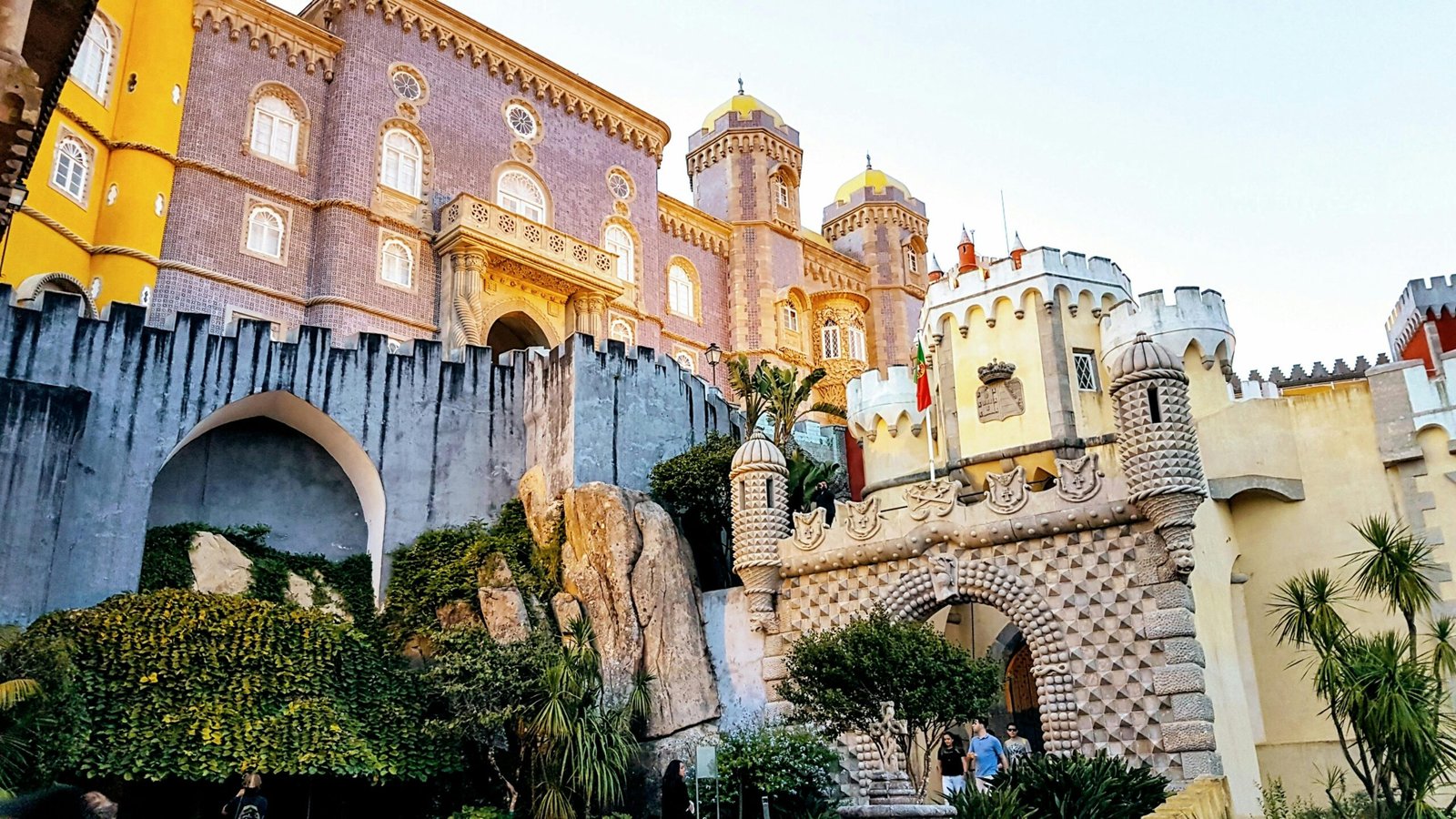

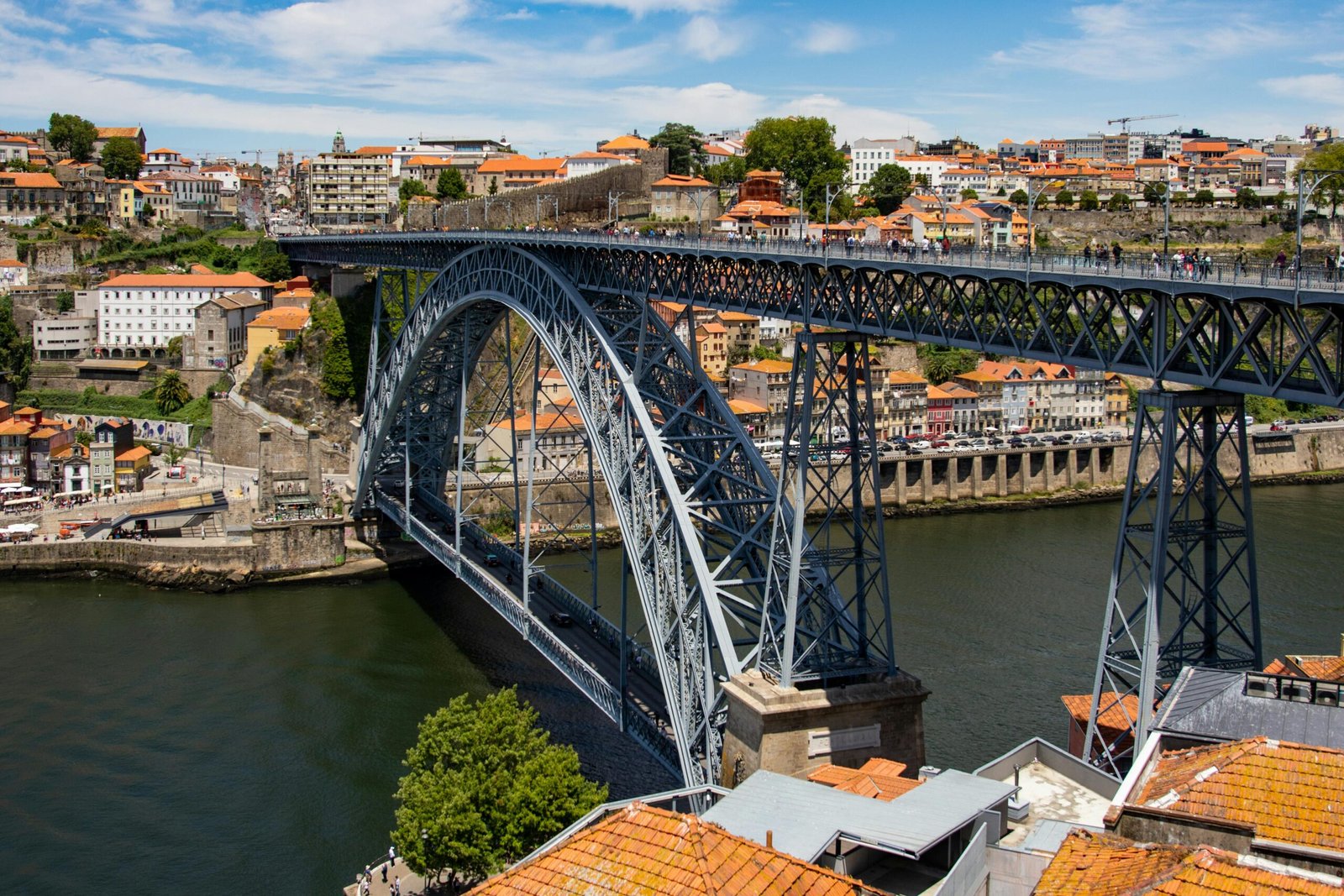
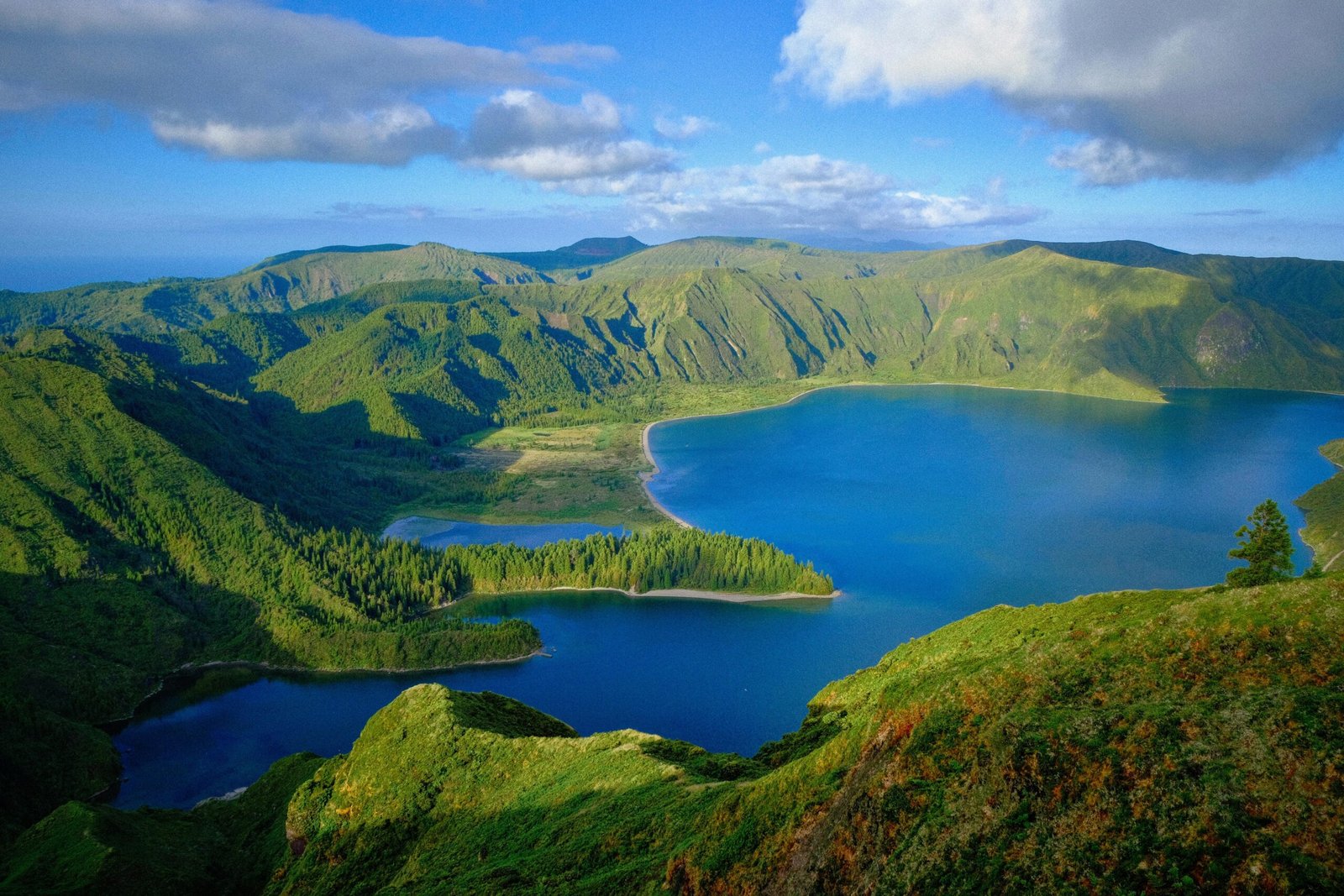
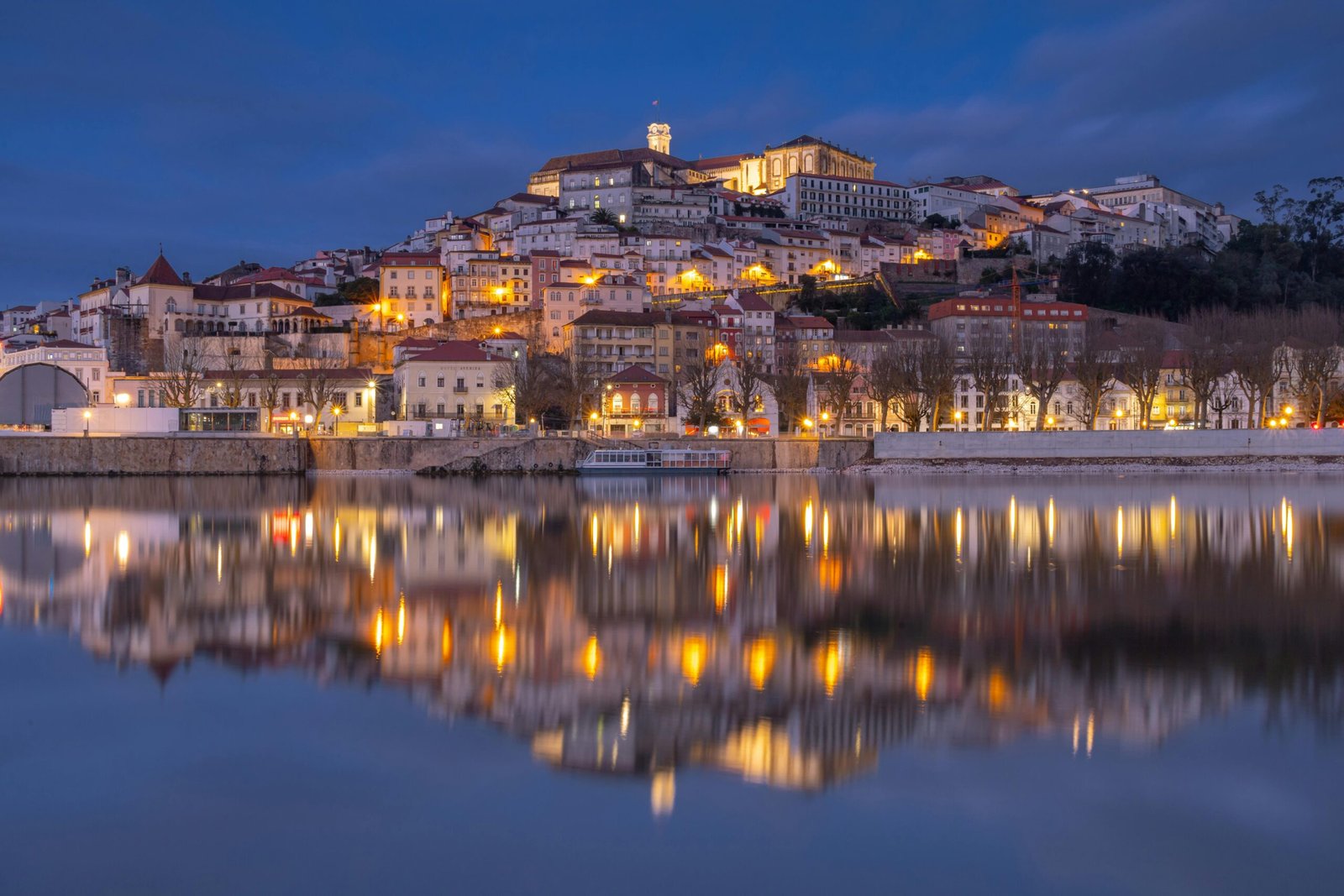
Bucket List Destinations Across Portugal

Lisbon
Lisbon, Portugal’s vibrant capital, blends old-world charm with coastal beauty and modern flair. Stroll through the historic Alfama district, admire the grandeur of Praça do Comércio, or ride a vintage tram through hilly, cobbled streets. From the iconic Belém Tower to buzzing nightlife in Bairro Alto and scenic views from Miradouros, Lisbon offers a captivating mix of culture, history, and Atlantic light.

Porto
Portugal’s second largest city is a picturesque mix of terraced hills, riverside charm, and rich heritage. Explore the Ribeira district, cross the iconic Dom Luís I Bridge, and sample world-famous Port wine in historic cellars lining the Douro River.

Sintra
A fairytale town nestled in forested hills near Lisbon, Sintra enchants with romantic palaces, lush gardens, and misty mountain air. Highlights include the vivid Pena Palace, Moorish Castle, and Quinta da Regaleira’s mystical wells and tunnels.
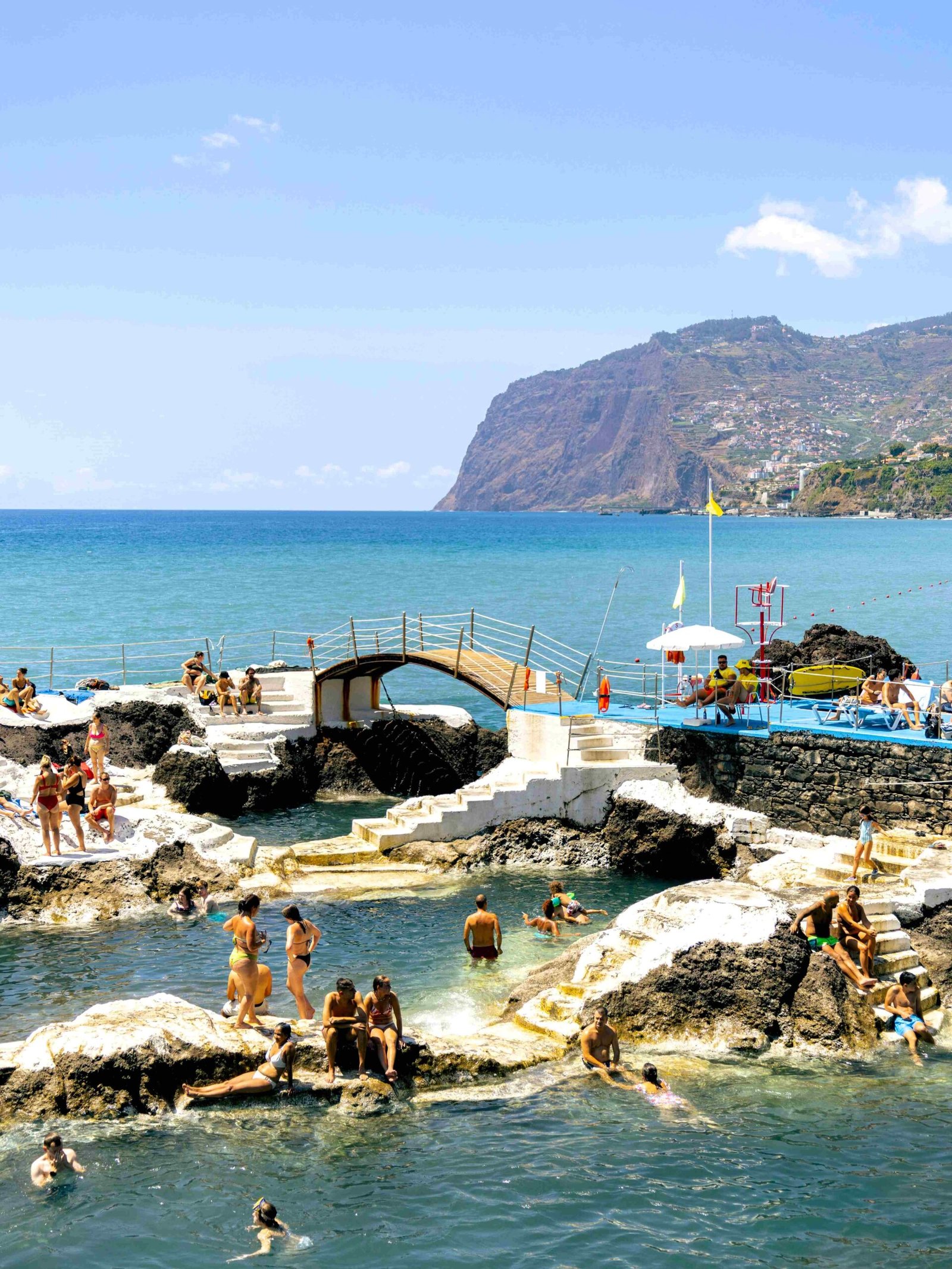
Madeira
An island of eternal spring in the Atlantic, Madeira stuns with rugged cliffs, volcanic peaks, and blooming botanical gardens. Hike dramatic levadas, relax in natural lava pools, and savor local delicacies in Funchal’s vibrant markets.
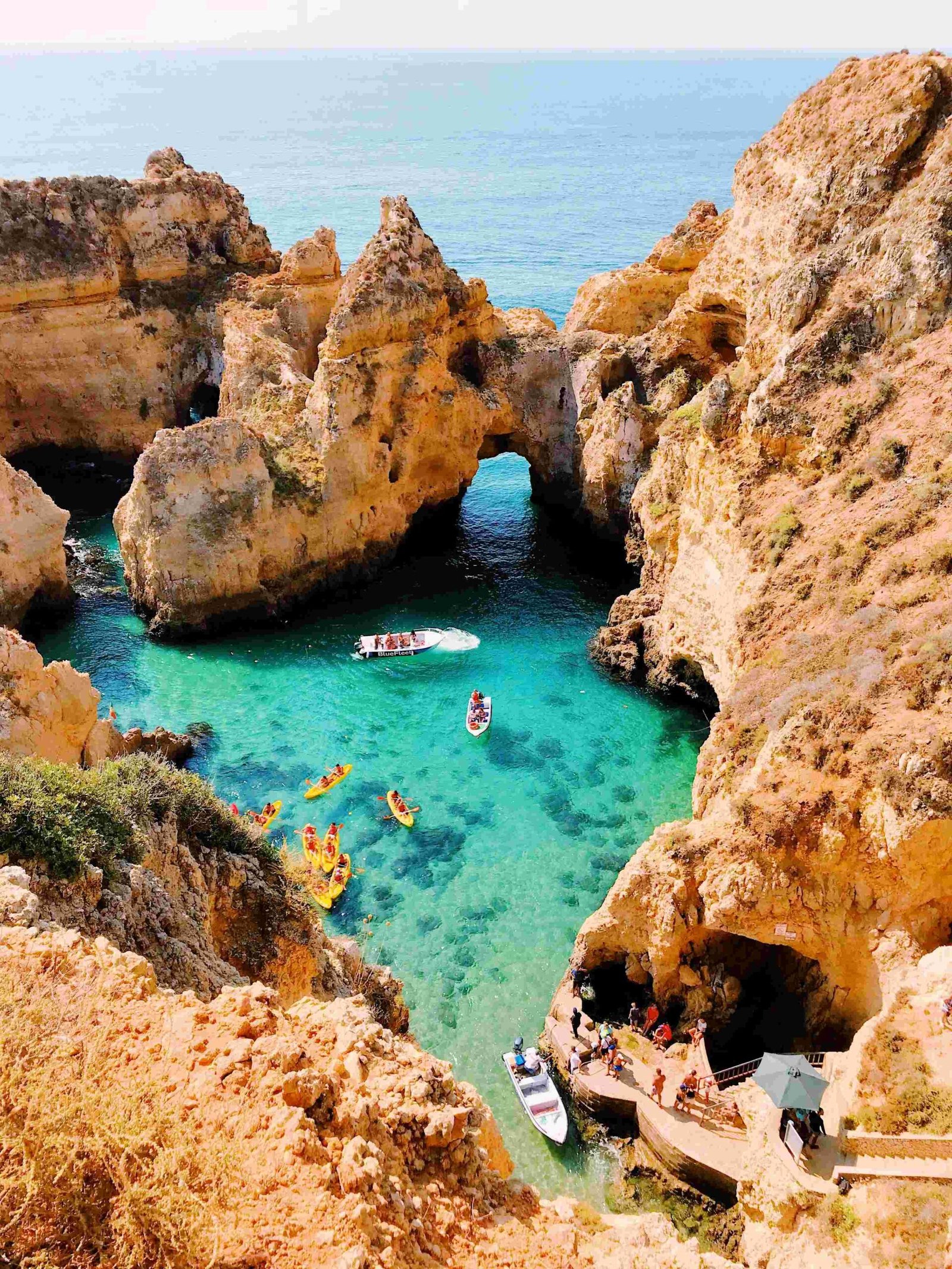
Faro
The gateway to the Algarve, Faro blends coastal calm with cultural charm. Wander the cobbled old town, admire the Arco da Vila, or take a boat to explore the serene Ria Formosa lagoons and hidden island beaches.

Azores
A remote paradise of volcanic landscapes and emerald lakes, the Azores archipelago offers a dream escape for nature lovers. From crater hikes in São Miguel to whale watching in Pico, the islands teem with wild beauty and adventure.
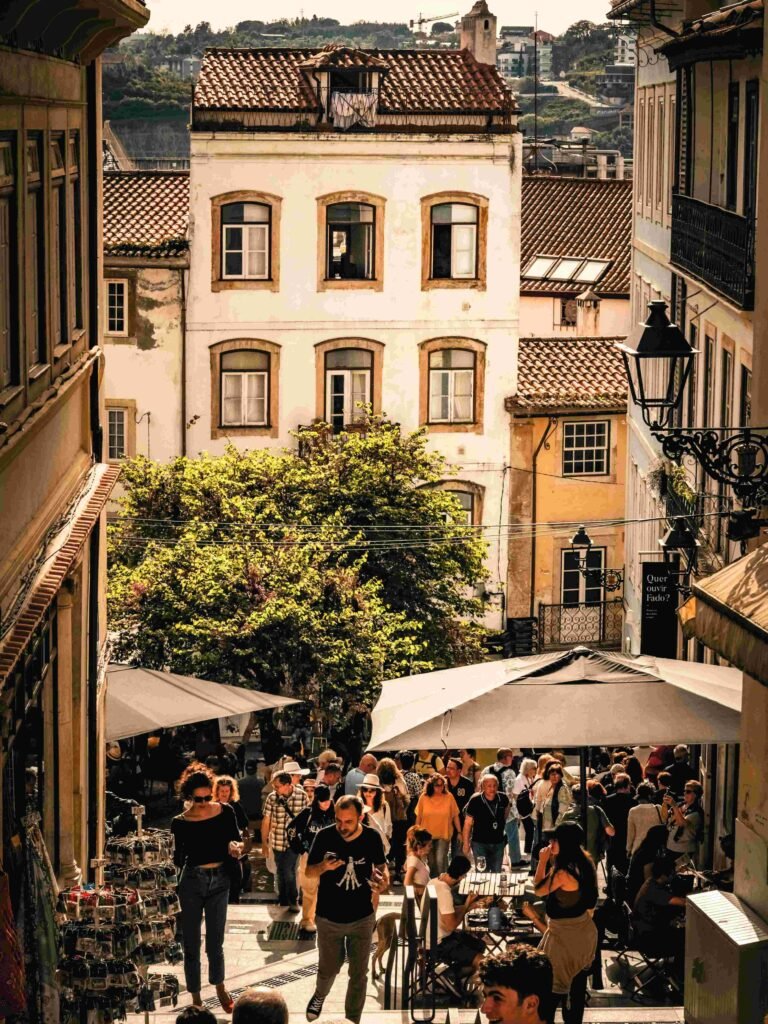
Coimbra
Steeped in academic tradition, Coimbra is home to one of Europe’s oldest universities. Discover its baroque library, climb the medieval tower, and soak in the youthful energy of a city where history and learning meet.

Evora
A UNESCO World Heritage gem in Alentejo, Évora showcases Roman ruins, medieval walls, and whitewashed streets. Visit the haunting Chapel of Bones, the Temple of Diana, and savor regional cuisine under golden southern skies.
Emergency
The universal emergency number in Portugal is 112, connecting you to police, fire, and medical services.
This number is toll-free and can be dialed from any phone, including mobiles and landlines, anywhere in the country.
For non-emergency police assistance, you can contact the local police stations directly using their specific phone numbers.

 Bikes and e-scooters – In Lisbon,
Bikes and e-scooters – In Lisbon,